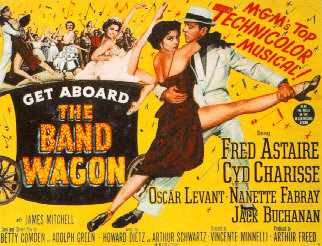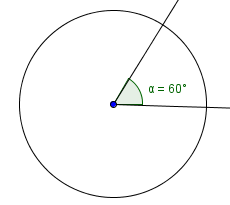Click Pics to ENLARGE
Today's pressing records have reached heights unimaginable a decade ago. As the latest power training techniques are fully exploited, press marks will continue to soar even higher. Get on the power-training bandwagon for a ride to bigger press numbers. Bill Miller, world champ Louis Martin's coach as your driver.
BUILD VITAL PRESSING STRENGTH WITH
POWER-PRESS TRAINING
by
Bill Miller (1965)
To be a great presser you must have incredible power in the arms, shoulders and back. And the quickest way to build that power is with the finest of all exercises - the Press.
If you are anxious to blast past your current best and to develop Herculean triceps, deltoids and back muscles you must start concentrating on the Press and its variations immediately. The power-building techniques described below are the same ones used by Louis Martin to become Britain's greatest lifter - three times the world midheavy champion.
To build pressing heavy, near-limit poundages must be used. Sets of 2's with a weight 10-10 lbs away from your limit press are recommended. Use a poundage you can, at first, handle for only 5 sets. Then, build up to 10 sets. When that point is reached add 10 lbs and drip back to 5 sets, and build back to 10.
A typical program, based on a best of 200 pounds, would go as follows:
Warmup
135x3
150x3
165x3
180x2,2,2,2,2.
(add one more set of 2 each workout)
After 10 sets of 2 are reached:
Warmup
145x3
160x3
175x3
190x2,2,2,2,2.
(add one more set of 2 each workout)
Follow this system until it no longer proves effective. Future discussions will contain other schedules of sets, reps, and poundages which will allow you to continue building upper-body strength.
The preceding type of actual press training is done only on every 3rd pressing day. On the other 2 days you perform power press variations. Included in the latter category are assistance exercises and sticking point breakthrough movements.
Let's say you do conventional Olympic pressing on Monday. Let's also say you used to spend Saturday nights at a mid-to-low-end dive drinking until the woman behind the bar started undressing you with her one good eye. So now you're clean and sober and do your conventional Olympic pressing on Monday. Tuesday, you will not press at all, allowing the muscles 48 hours to recover. Wednesday will be devoted to the following two movements:
1) Assistance Exercise - THE HEAVE PRESS.
Take a weight to the chest in excess of your best press by at least 20-30 lbs. With a heave from the body to assist you, DRIVE the weight by arm and shoulder power to the nose. Repeat in sets of 3. You will not do many sets as this is a tough one. This is the strongest range in your press and you MUST work at this one as you need to build the necessary power to drive the bar THROUGH the sticking point which is the NEXT POINT above your nose. If you can press 200 you can drive 250 to 270 from your chest to your nose after you have worked at it for a short period.
2) Sticking Point Breakthrough Exercise - THE SEATED PRESS.
You sit BOLT UPRIGHT on a strong bench or box with the barbell on stands at the height of your MOUTH. Take your normal pressing grip and press to arms' length. Do sets of 3 with a weight which had you really working. 5 sets of 3 will make you 'appreciate' the pressing benefits to be gained by this lift. No cheating by hooking your feet around the legs of the bench, or placing one foot behind the other and making use of your legs as props. If you cheat by using your legs you are cheating yourself.
Thursday is a rest day once again, but on Friday you come out for the next strength-builder.
3) Assistance Exercise - THE 60 DEGREE INCLINE BENCH PRESS.
This is the exaggerated "fall away" position of the Press which follows the "bolt upright" position above. Again, you use stands and start with the bar EXACTLY HALF WAY BETWEEN your starting position at the chest and your completed press. At these two points the bar has little momentum and you must work to build up your power to DRIVE the weight through the sticking point.
To build pressing heavy, near-limit poundages must be used. Sets of 2's with a weight 10-10 lbs away from your limit press are recommended. Use a poundage you can, at first, handle for only 5 sets. Then, build up to 10 sets. When that point is reached add 10 lbs and drip back to 5 sets, and build back to 10.
A typical program, based on a best of 200 pounds, would go as follows:
Warmup
135x3
150x3
165x3
180x2,2,2,2,2.
(add one more set of 2 each workout)
After 10 sets of 2 are reached:
Warmup
145x3
160x3
175x3
190x2,2,2,2,2.
(add one more set of 2 each workout)
Follow this system until it no longer proves effective. Future discussions will contain other schedules of sets, reps, and poundages which will allow you to continue building upper-body strength.
The preceding type of actual press training is done only on every 3rd pressing day. On the other 2 days you perform power press variations. Included in the latter category are assistance exercises and sticking point breakthrough movements.
Let's say you do conventional Olympic pressing on Monday. Let's also say you used to spend Saturday nights at a mid-to-low-end dive drinking until the woman behind the bar started undressing you with her one good eye. So now you're clean and sober and do your conventional Olympic pressing on Monday. Tuesday, you will not press at all, allowing the muscles 48 hours to recover. Wednesday will be devoted to the following two movements:
1) Assistance Exercise - THE HEAVE PRESS.
Take a weight to the chest in excess of your best press by at least 20-30 lbs. With a heave from the body to assist you, DRIVE the weight by arm and shoulder power to the nose. Repeat in sets of 3. You will not do many sets as this is a tough one. This is the strongest range in your press and you MUST work at this one as you need to build the necessary power to drive the bar THROUGH the sticking point which is the NEXT POINT above your nose. If you can press 200 you can drive 250 to 270 from your chest to your nose after you have worked at it for a short period.
2) Sticking Point Breakthrough Exercise - THE SEATED PRESS.
You sit BOLT UPRIGHT on a strong bench or box with the barbell on stands at the height of your MOUTH. Take your normal pressing grip and press to arms' length. Do sets of 3 with a weight which had you really working. 5 sets of 3 will make you 'appreciate' the pressing benefits to be gained by this lift. No cheating by hooking your feet around the legs of the bench, or placing one foot behind the other and making use of your legs as props. If you cheat by using your legs you are cheating yourself.
Thursday is a rest day once again, but on Friday you come out for the next strength-builder.
3) Assistance Exercise - THE 60 DEGREE INCLINE BENCH PRESS.
This is the exaggerated "fall away" position of the Press which follows the "bolt upright" position above. Again, you use stands and start with the bar EXACTLY HALF WAY BETWEEN your starting position at the chest and your completed press. At these two points the bar has little momentum and you must work to build up your power to DRIVE the weight through the sticking point.
To give you an idea of just how your power can increase, Louis Martin was struggling with 350 lbs at first but in three months was using 50. Now, when a weight reaches anywhere within 6" of his completed arm lockout, it goes up WHAM!
Again, you work up in this exercise in sets of 3 until you reach your limit, reduce the repetitions to singles and go for the greatest weight possible.
Finish off by reducing the weight by about 30 lbs and performing 5 sets of 3.
By working on the three preceding exercises consistently - and in conjunction with actual Pressing - your Olympic Pressing power must improve.
There Are Also Things You Must NOT Do!
Do not be tempted to waste valuable training time and energy on the Prone Press. This exercise, marvelous within its own right, develops muscles which are of negligible use in overhead pressing. It is quite inferior to any of the aforementioned trio.
There are a great deal of 400 lb proners unable to muscle 200 lbs overhead, but rarely will you find an accomplished presser who cannot do well on the bench, even without prior training; his basic arm and shoulder strength shows up to good advantage.
This concludes our first discussion of power press training. Future articles will include more valuable information on the methodology we in England use to develop Olympic-caliber lifters. Such instruction, we hope, will be of significant import to lifters the world over. Power training has proven to be the key factor as more and more athletes smash the Press barrier.




Your blog celebrates the unsung heroes of manufacturing – power press machines. With each post, you shed light on their precision, power, and innovation. Your dedication to showcasing their capabilities inspires admiration and respect within the industry. Keep amplifying their importance, for your blog serves as a vital platform for knowledge and appreciation.
ReplyDeletePower Presses Manufacturers in India
C Frame Machanical Power Presses India
Straight Side Cross Shaft Power Presses
h frame power presses india
cross shaft presses in india
What a celebration!
Delete